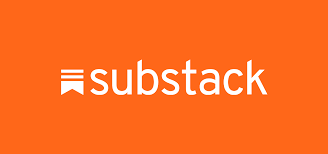What is Substack? and How Does It Work?

Introduction Substack
Substack, a trailblazing digital platform, surfaced in 2017 as a game changer in the world of online publishing and content creation. Conceived by Chris Best, Hamish McKenzie, and Jairaj Sethi, Substack was designed with a singular vision to revise the way pens connect with their followership and monetize their content. At its core, Substack reimagines the traditional newsletter format, blending it with ultramodern technology to offer a unique and particular way for pens to share their stories, receptivity, and moxie directly with their subscribers. This innovative approach has not only normalized content creation but has also opened new doors for independent journalism and niche storytelling.
What is Substack?
Substack is a subscription network for independent pens and generators to publish a blog, newsletter, podcast, or videotape with full editorial control and no gatekeepers. You can grow your audience, enjoy your content, and earn money from your work on Substack.
Substack is a digital platform that has revolutionized the way pens and generators partake in content and connect with their followership. Launched in 2017 by Chris Best, Hamish McKenzie, and Jairaj Sethi, it offers a unique mix of dispatch newsletter services and website publishing, allowing individuals to distribute content directly to their subscribers. This platform primarily caters to independent pens and intelligence rs, furnishing them with tools to monetize their work through paid subscriptions, basically reconsidering the traditional newsletter format. Substack stands out for its stoner-friendly interface, enabling generators to concentrate on producing content while it manages the specialized aspects of distribution and subscription operation.
The innovative approach of Substack has had a significant impact on the world of online publishing. It empowers generators by allowing them to maintain full control over their content, followership, and monetization strategies, a stark discrepancy to the announcement-driven profit models current in online media. This has led to a new surge of independent journalism and creative jotting, where pens aren’t bound by the tract constraints of traditional media outlets. The platform has become a haven for those seeking to explore niche motifs, offer in-depth analysis, or make a community around specific interests. With its emphasis on direct anthology pen connections, Substack is reconsidering what it means to be a content creator in the digital age.
How does Substack work?

Substack is a platform that allows independent pens and generators to publish newsletters, podcasts, vids, and blogs with full editorial control and no doorkeepers. To get started, pens can subscribe to a free account and produce a simple website where they can publish their content. Substack provides a way to make a dispatch marketing list, write newsletters, charge subscribers, and manage payments. The platform has further than 500,000 paying subscribers to its newsletters, published by an array of pens from whistleblower Edward Snowden to gemstone musician Jeff Tweedy and salad freak Emily Nun. Substack takes 10% of subscription earnings and payment company Stripe takes further 3 with pens taking the rest.
Substack has offered grants to authors to make a followership on the platform and its number of active pens doubled in the first months of the pandemic last year.
Monetization is a critical component of Substack, distinguishing it from other publishing platforms. Creators have the inflexibility to offer their content for free, or they can charge a subscription figure, allowing them to directly earn from their jotting. This model empowers generators to make a sustainable income source, free from the constraints and misgivings of announcement-grounded profit models. Subscribers pay for the content they value, creating a direct fiscal relationship between the creator and their followership. Substack’s part in this sale is to grease the payment process, for which it charges a commission.
Is Substack free to use?
Substack is free to use for writers and content generators, offering them a platform to publish newsletters and write posts without any outspoken costs. However, Substack will keep a 10% cut of earnings for operating costs like development and customer support, If you turn on paid subscriptions. The Substack app is also free and designed to read your favourite writers in one devoted space. The platform is designed to be accessible, allowing anyone to subscribe up and start creating happy incontinent. This ease of entry is one of Substack’s crucial lodestones, as it empowers writers of all backgrounds and situations of experience to partake in their studies, stories, and moxie with a global followership.
The introductory features necessary for publishing and distributing newsletters, similar to content hosting and dispatch delivery, are handed at no cost, icing that all generators have to establish and grow their presence online.
Can anyone start a Substack newsletter?
Yes, anyone can start a Substack newsletter. Substack is a platform that allows writers to produce and distribute newsletters to their subscribers.. Can produce Substack publications by subscribing to the Substack website. Once created publication, can publish stories, ideas, and more in jotting, audio, videotape, and other formats. Can also turn on paid subscriptions for the newsletter, which allows Anyone followership to pay directly through subscriptions. Substack keeps a 10% cut of earnings for operating costs like development and customer support if Anyone turns on paid subscriptions.
However, Anyone can find further information on the Substack website, If Anyone is interested in starting the Substack newsletter.
How do creators make money on Substack?
Generators make money on Substack primarily through subscriber-paid content. The platform enables pens and content generators to set up a subscription model for their newsletters, where compendiums pay a recurring figure to pierce exclusive, ultra-expensive content. This model is particularly seductive as it allows generators to induce a steady, predictable income sluice, directly supported by their followership. Generators have the freedom to decide the pricing structure of their subscriptions, which can be yearly or periodic, furnishing inflexibility both for them and their subscribers. This direct-to-consumer approach not only incentivizes quality and engaging content but also establishes a closer relationship between generators and their followership, fostering a sense of community and fidelity.
Substack also supports a freemium model, where generators offer some content for free while reserving decoration content for paying subscribers. This strategy can be effective in attracting a wider followership, giving them a taste of the content before they commit to a subscription. Importantly, Substack handles the backend processes related to subscriptions, including payments and subscriber operation, making it easier for generators to concentrate on content creation. The platform charges a chance of the subscription profit as a service figure, which covers the cost of these executive tasks and the continued development of the platform. By using Substack’s stoner-friendly structure, generators can effectively monetize their moxie, stories, or receptivity, turning their passion into a feasible source of income.
Conclusion
Substack represents a significant shift in the digital content geography, offering a unique and important platform for pens and generators. It merges the traditional conception of dispatch newsletters with ultramodern technology, allowing individuals to directly connect with their followership through a subscription-grounded model. This platform democratizes happy creation, giving pens, intelligence, and experts the tools to singly publish, distribute, and monetize their work. Its stoner-friendly interface ensures that indeed those with minimum specialized chops can fluently produce and maintain a newsletter, fastening their powers on producing compelling content rather than scuffling with complex backend systems.




Hi, this weekend is pleasant in support of me, because this point in time i am reading this great informative
article here at my home.
my web blog; vpn coupon code 2024
I am sure this piece of writing has touched all the internet people, its really really pleasant article on building up new weblog.
Also visit my blog … vpn special
You ought to take part in a contest for one of the
finest blogs on the web. I will recommend this blog!
Also visit my web page – vpn coupon code 2024
Howdy! Quick question that’s completely off topic.
Do you know how to make your site mobile friendly?
My web site looks weird when viewing from my iphone4.
I’m trying to find a template or plugin that might be
able to resolve this problem. If you have any recommendations, please share.
Cheers!
Take a look at my webpage: vpn special coupon code 2024
Hmm is anyone else having problems with the images on this blog loading?
I’m trying to figure out if its a problem on my end or if it’s the blog.
Any feedback would be greatly appreciated.
My web page; vpn coupon code 2024